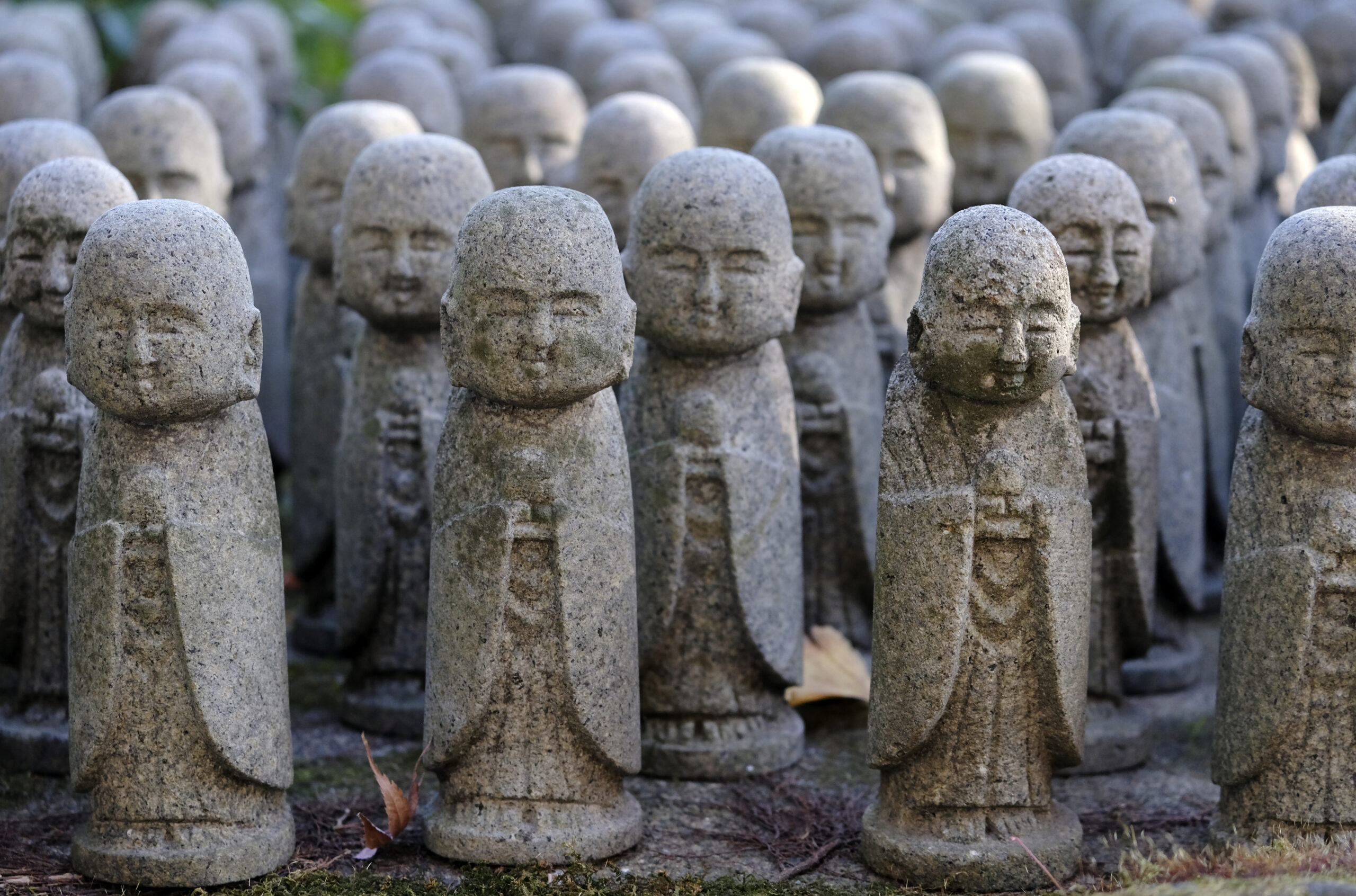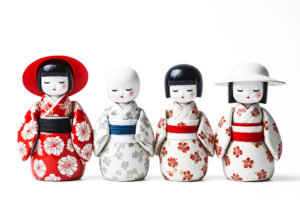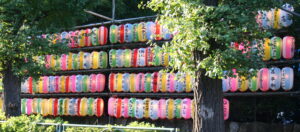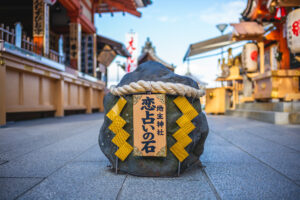Nestled in the coastal city of Kamakura, Japan, Hase-dera Temple is a significant cultural and spiritual landmark that attracts thousands of visitors each year. Renowned for its stunning statues and rich history, the temple offers a glimpse into the intricate world of Japanese Buddhism. As one traverses the serene grounds of Hase-dera, one cannot help but be captivated by the profound artistry and deep-rooted traditions that echo through its halls, particularly the iconic Buddhist statues that stand as symbols of compassion and enlightenment. This article will explore the myriad dimensions of Hase-dera Temple, from its historical significance and artistic techniques to the spiritual experiences it offers to visitors.
An Introduction to Hase-dera Temple’s Rich Heritage
Hase-dera Temple, founded in the early 8th century, is a significant site for Buddhist worship and cultural heritage in Japan. Originally established by the monk Tokudo Shonin, the temple has evolved over centuries, embodying the changes and growth of Japanese Buddhism. The temple is dedicated to Kannon, the Goddess of Mercy, known for her compassionate nature and ability to relieve suffering. With its exquisite wooden structures, vibrant gardens, and striking statues, Hase-dera serves as a sanctuary where history, spirituality, and art intertwine seamlessly.
The temple is part of the larger Kannon pilgrimage route, attracting both devout practitioners and curious tourists alike. Upon entering Hase-dera, visitors are greeted by the tranquil ambiance, punctuated by the sound of rustling leaves and distant temple bells. The atmosphere invites a sense of reflection and peace, reflecting the temple’s role as a spiritual haven. Each corner of Hase-dera reveals elements of its rich heritage, from ancient relics to beautifully maintained gardens that showcase the beauty of nature intertwined with human craftsmanship.
Moreover, Hase-dera Temple’s heritage is not only tied to its architectural beauty but also to the community it has fostered. The temple actively engages with local and international visitors, providing educational programs about Buddhism and traditional practices. This commitment to sharing knowledge ensures that the wisdom and values of Hase-dera continue to resonate with future generations. As such, the temple stands not just as a historical site but as a living testament to the enduring legacy of Buddhism in Japan.
Visiting Hase-dera is also an invitation to delve into the stories and legends that surround it. The temple has been a focal point for numerous tales, each enriching its history and cultural significance. From miraculous healings attributed to Kannon to the temple’s role during significant periods in Japanese history, these narratives contribute to the temple’s allure. In this way, Hase-dera Temple is much more than an architectural marvel; it is a vibrant tapestry of faith, history, and artistic expression.
Ultimately, Hase-dera Temple’s rich heritage invites visitors to explore not just the physical space but the spiritual journey it represents. Every statue, every garden, and every prayer resonates with the deep-rooted traditions of Japanese Buddhism. The temple serves as a reminder of the importance of compassion, reflection, and the pursuit of enlightenment, underscoring its significance in the modern world.
In this exploration of Hase-dera, we will delve deeper into its historical significance, the artistry of its iconic statues, and the experiences that await those who step into this sacred space.
The Historical Significance of Hase-dera Temple
Hase-dera Temple’s historical significance extends far beyond its picturesque surroundings. Dating back to the Nara period, the temple has witnessed the ebb and flow of Japanese history, making it a vital cultural artifact. Initially founded as a small temple dedicated to Kannon, it soon gained popularity among locals and travelers, establishing itself as a pivotal site for Buddhist worship during the Heian period. The temple’s continued relevance speaks to its resilience and adaptability over centuries.
Throughout its history, Hase-dera has served various roles, from a place of solace during times of social upheaval to a center of artistic and cultural exchange. The temple was often a refuge for those seeking spiritual guidance, particularly during the tumultuous periods of the Kamakura and Muromachi eras. Its significance was further underscored during the Edo period, when the temple became a popular pilgrimage destination, drawing thousands who sought the blessings of Kannon.
The temple’s historical importance is also reflected in its architecture and art. Many of the structures and statues within Hase-dera are designated Important Cultural Properties, showcasing exquisite craftsmanship that has been preserved for generations. The juxtaposition of ancient design with the surrounding natural beauty adds to the temple’s charm and historical weight, illustrating the harmonious relationship between spirituality and nature that is prevalent in Japanese culture.
Moreover, Hase-dera Temple has played an essential role in the broader narrative of Japanese Buddhism, influencing other temples and practices throughout the country. Its dedication to Kannon has inspired countless devotees, contributing to the proliferation of Kannon worship across Japan. This impact is evident in the numerous representations of Kannon found in various temples, each echoing the teachings and philosophies rooted in Hase-dera.
The temple has also adapted to modern times while honoring its past. Educational programs and cultural events are organized regularly, fostering a deeper understanding of Buddhist teachings and promoting dialogue between tradition and contemporary society. These initiatives ensure that Hase-dera remains a living part of Japan’s cultural landscape, bridging the gap between history and modern spiritual practice.
In essence, Hase-dera Temple is not merely a relic of the past; it is a testament to the enduring power of faith and community. Its historical significance continues to resonate, influencing the spiritual lives of those who visit and the cultural fabric of Japan as a whole.
A Journey Through Time: The Temple’s Origins
The origins of Hase-dera Temple are steeped in legend and spirituality. According to popular belief, the temple was founded in 736 AD by the monk Tokudo Shonin, who was said to have discovered a statue of Kannon while on a pilgrimage. This miraculous find marked the beginning of Hase-dera as a sacred site dedicated to the Goddess of Mercy. The original statue, carved from wood, was later replaced with a more durable version, yet the essence of compassion and protection embodied by Kannon has remained central to the temple’s identity.
During its early years, Hase-dera was a modest establishment, primarily serving the local community. However, as the popularity of Kannon grew, so too did the temple’s stature. By the Heian period (794-1185), Hase-dera had transformed into a bustling center for spiritual practice, attracting pilgrims from across the region. The temple’s reputation was solidified as a place where devotees could seek solace and healing, leading to significant growth and architectural expansion.
The development of Hase-dera also coincided with the flourishing of Buddhist art in Japan. The temple became a hub for artisans and craftsmen who were inspired by the teachings of Buddhism. This artistic collaboration resulted in the creation of iconic statues and intricate carvings that adorn the temple grounds, showcasing the skill and devotion of those who contributed to its legacy. Each piece of art serves as a visual representation of Buddhist principles, inviting reflection and reverence.
As Japan transitioned through various historical periods, Hase-dera adapted to the shifting social and political landscapes. The Kamakura period (1185-1333) marked a time of significant change, with the rise of samurai culture and increased patronage of Buddhist temples. Hase-dera thrived during this era, attracting nobles and warriors who sought the blessings of Kannon for protection and success in battle. The temple’s growth mirrored the evolving religious landscape, where Buddhism became intertwined with the identities of powerful clans.
The Meiji Restoration in the late 19th century brought further challenges as the government sought to modernize Japan and separate religion from state affairs. Many temples faced decline, yet Hase-dera managed to preserve its core identity. With a focus on education and community outreach, the temple adapted its practices while maintaining its historical roots. This resilience ensured that Hase-dera continued to thrive into the modern era, remaining a vital part of Japan’s spiritual heritage.
In summary, the journey through time at Hase-dera Temple reveals a rich tapestry of origins, growth, and adaptation. Its early beginnings as a humble site of worship have evolved into a significant cultural landmark, embodying the values of compassion and community that remain integral to Japanese Buddhism today.
The Iconic Kannon Statue: A Symbol of Compassion
At the heart of Hase-dera Temple lies the iconic Kannon statue, an embodiment of compassion and mercy that draws countless visitors each year. Standing at approximately 9.18 meters (30 feet), this wooden statue of Kannon is one of the largest representations of the deity in Japan. Carved during the early Heian period, the statue showcases exquisite craftsmanship, with delicate features and flowing robes that exude an aura of serenity. It is believed that the statue was created to provide solace to those suffering, reinforcing Kannon’s role as a protector and healer.
The Kannon statue at Hase-dera is particularly renowned for its facial expressions, which are said to reflect a deep understanding of human emotions. Visitors often remark on the statue’s gentle gaze, which seems to convey a message of empathy and compassion. This connection fosters a sense of comfort for those seeking spiritual guidance, and many leave offerings or prayers at the statue’s feet, hoping for Kannon’s blessings in times of need.
Furthermore, the Kannon statue embodies the Buddhist principle of "karuna," or compassion. This fundamental tenet encourages individuals to alleviate the suffering of others and recognize the interconnectedness of all beings. As such, the statue serves as a reminder of the importance of kindness and empathy in daily life. Many visitors take the opportunity to reflect on their own actions and intentions, inspired by the compassion embodied by Kannon.
Hase-dera’s Kannon statue is also unique in its representation; it depicts Kannon with eleven heads and a thousand arms, symbolizing the deity’s ability to perceive the suffering of all beings and respond with an infinite capacity for help. This multifaceted representation reinforces the idea that compassion is not limited but rather a boundless resource available to all. Visitors often find themselves drawn to the statue, contemplating their own struggles and seeking solace in Kannon’s divine presence.
In addition to its artistic and spiritual significance, the Kannon statue also plays a role in the temple’s ongoing cultural activities. The statue is featured prominently during various festivals and rituals throughout the year, including the Kannon Matsuri, which celebrates the deity and pays homage to the values she represents. These events bring together the community and visitors alike, creating a vibrant atmosphere of devotion and celebration.
Ultimately, the iconic Kannon statue at Hase-dera Temple is more than a mere work of art; it is a powerful symbol of compassion that resonates deeply with those who encounter it. Through its intricate design and spiritual significance, the statue continues to inspire and uplift, reminding all who visit of the importance of empathy and kindness in a world often marked by suffering.
The Intricacies of Hase-dera’s Wooden Statues
Hase-dera Temple is home to a remarkable collection of wooden statues that reflect the artistry and craftsmanship of the time in which they were created. Each statue tells a story, embodying the principles of Buddhism and serving as a visual representation of the teachings that permeate the temple. The intricacies of these wooden statues reveal not only the skill of the artisans but also the deep spiritual beliefs that informed their creation.
One of the most notable features of Hase-dera’s wooden statues is the meticulous attention to detail. The artisans used traditional methods to carve and paint the statues, a labor-intensive process that required years of practice and dedication. The delicate features, expressive postures, and vibrant colors of the statues are a testament to the artists’ commitment to their craft. As visitors explore the temple grounds, they are often struck by the lifelike quality of these statues, which seem to convey emotions and stories of their own.
Among the most significant wooden statues at Hase-dera is the eleven-headed Kannon, which complements the larger Kannon statue. This intricately carved figure symbolizes Kannon’s ability to see and respond to the suffering of all beings. The eleven heads represent various aspects of compassion, illustrating the depth of Kannon’s empathy. The detailed craftsmanship of this statue not only serves an artistic purpose but also acts as a focal point for worship and reflection.
Other wooden statues within Hase-dera depict various Buddhist deities, each with its own unique attributes and significance. These figures play an essential role in the temple’s overall spiritual atmosphere, inviting visitors to engage with the diverse aspects of Buddhist belief. The statues are often surrounded by offerings, prayers, and incense, creating an environment that fosters contemplation and devotion.
The preservation of these wooden statues is of utmost importance, as they are vulnerable to the effects of time and environmental factors. The temple authorities have implemented various conservation measures to ensure the longevity of these artistic treasures. Regular maintenance and restoration efforts are conducted to protect the statues from deterioration, allowing future generations to appreciate their beauty and significance.
In addition to their aesthetic and spiritual value, the wooden statues at Hase-dera Temple also serve as a resource for historical study. Scholars and art historians examine these pieces to gain insights into the artistic techniques and cultural influences of the time. The statues can provide a window into the past, revealing the social and religious dynamics that shaped their creation.
Ultimately, the intricacies of Hase-dera’s wooden statues reflect the devotion and skill of the artisans who crafted them, as well as the enduring values of compassion and empathy central to Buddhism. Each statue serves as a reminder of the rich cultural heritage of Japan and the importance of preserving this legacy for future generations.
Exploring the Temple Grounds: A Spiritual Oasis
Hase-dera Temple is more than just its iconic statues; the temple grounds themselves offer a serene sanctuary for visitors seeking spiritual renewal. The carefully landscaped gardens, winding paths, and tranquil ponds create an environment that encourages reflection and meditation. As one wanders through the temple, the harmony of nature and spirituality becomes evident, inviting guests to immerse themselves in the peaceful ambiance.
Upon entering the temple grounds, visitors are greeted by lush greenery, vibrant flowers, and the gentle sound of water flowing through streams and ponds. The gardens, designed to embody the principles of Zen Buddhism, are meticulously maintained to reflect the beauty of nature in its purest form. Each element, from the carefully placed stones to the seasonal flowers, contributes to a sense of tranquility that enhances the spiritual experience.
The temple’s layout is thoughtfully designed to guide visitors through a journey of discovery. As one explores the various halls, each dedicated to different aspects of Buddhism, there is a palpable sense of reverence in the air. The architecture, with its wooden structures and intricate carvings, complements the natural beauty surrounding it, creating a harmonious blend of art and spirituality.
One of the highlights of the temple grounds is the viewpoint overlooking Kamakura Bay. This vantage point offers breathtaking views of the coastline and surrounding hills, serving as a reminder of the interconnectedness of nature and spirituality. Visitors often pause here to take in the scenery, reflecting on their own journeys and the broader context of their lives.
Hase-dera also features a number of smaller shrines and altars scattered throughout the grounds, each dedicated to various deities and aspects of Buddhist practice. These sacred spaces invite visitors to pause, offer prayers, and engage in personal reflection. The atmosphere of quiet contemplation encourages a deeper connection with the teachings of Buddhism and fosters a sense of inner peace.
The temple grounds serve as a gathering place for community events and spiritual practices. Regular ceremonies and festivals celebrate the traditions associated with Hase-dera, bringing together locals and visitors alike. These events often include chanting, meditation, and communal offerings, reinforcing the sense of community and shared devotion that defines the temple’s spirit.
In essence, exploring the temple grounds of Hase-dera is an invitation to embark on a spiritual journey. The carefully curated landscape, combined with the rich history and cultural significance of the site, creates an oasis of tranquility that resonates with all who visit. It is a place where one can pause, reflect, and reconnect with the deeper aspects of life, making it a truly transformative experience.
The Role of Hase-dera in Japanese Buddhism
Hase-dera Temple plays a pivotal role in the landscape of Japanese Buddhism, serving as a center for worship, education, and cultural exchange. Its dedication to Kannon, the Goddess of Mercy, positions it as an essential site for those seeking spiritual solace and guidance. The temple’s influence extends beyond its physical presence; it has shaped the practices and beliefs of countless individuals throughout history.
As one of the key temples along the Kannon pilgrimage route, Hase-dera attracts pilgrims from all over Japan. These individuals embark on journeys to seek the blessings of Kannon, hoping to find relief from suffering and challenges in their lives. The temple’s reputation as a place of healing and protection has solidified its position within the broader framework of Japanese Buddhist practice.
Hase-dera also serves as a vital educational hub, offering programs that teach the principles of Buddhism to visitors of all ages. Through workshops, lectures, and guided tours, the temple fosters a deeper understanding of Buddhist teachings and encourages individuals to integrate these lessons into their daily lives. This commitment to education ensures that the wisdom of Buddhism continues to flourish in contemporary society.
The temple’s role as a cultural exchange center is evident in the interactions between local communities and international visitors. Hase-dera welcomes individuals from diverse backgrounds, providing a space for dialogue and shared experiences. This inclusivity reflects the essence of Buddhism—compassion and understanding for all beings, regardless of their beliefs or backgrounds.
Furthermore, Hase-dera is involved in various charitable initiatives, embodying the Buddhist principle of altruism. The temple organizes events and outreach programs aimed at supporting marginalized communities and promoting social welfare. Through these efforts, Hase-dera exemplifies the practical application of Buddhist teachings, encouraging followers to put compassion into action.
The temple’s significance is also recognized in its architectural and artistic contributions to Buddhism in Japan. The intricate designs and craftsmanship of Hase-dera’s structures and statues have inspired generations of artisans and worshippers. The temple stands as a testament to the enduring legacy of Japanese Buddhism, influencing the development of other temples and artistic expressions throughout the country.
In summary, Hase-dera Temple holds a prominent role within Japanese Buddhism, acting as a beacon of hope, education, and cultural exchange. Its dedication to Kannon and commitment to community engagement exemplify the core values of compassion and understanding that define the essence of Buddhism. Hase-dera continues to inspire and uplift, ensuring that the teachings of the Buddha remain alive and relevant.
Festivals and Rituals: Celebrating Tradition at Hase-dera
Hase-dera Temple is a vibrant center of celebration, hosting a variety of festivals and rituals throughout the year that reflect the rich traditions of Japanese Buddhism. These events attract both locals and tourists, creating a sense of community while honoring the temple’s spiritual heritage. Each festival is steeped in meaning, offering a unique opportunity for participants to engage with the teachings of Buddhism and experience the joy of communal worship.
One of the most significant events at Hase-dera is the Kannon Matsuri, or Kannon Festival, dedicated to the Goddess of Mercy. Held annually in the spring, this festival draws large crowds who gather to pay homage to Kannon through prayers, offerings, and traditional performances. The atmosphere is filled with energy as the temple transforms into a vibrant celebration, complete with food stalls and cultural displays. Participants engage in rituals that symbolize the values of compassion and healing, reinforcing their connection to the divine.
Another notable event is the Jizo Matsuri, celebrating Jizo, the protector of children and travelers. During this festival, visitors bring offerings of toys and clothing to the temple, which are then placed at the foot of the Jizo statues. This act of generosity reflects the Buddhist principles of compassion and selflessness, as participants honor the spirits of the deceased and seek blessings








